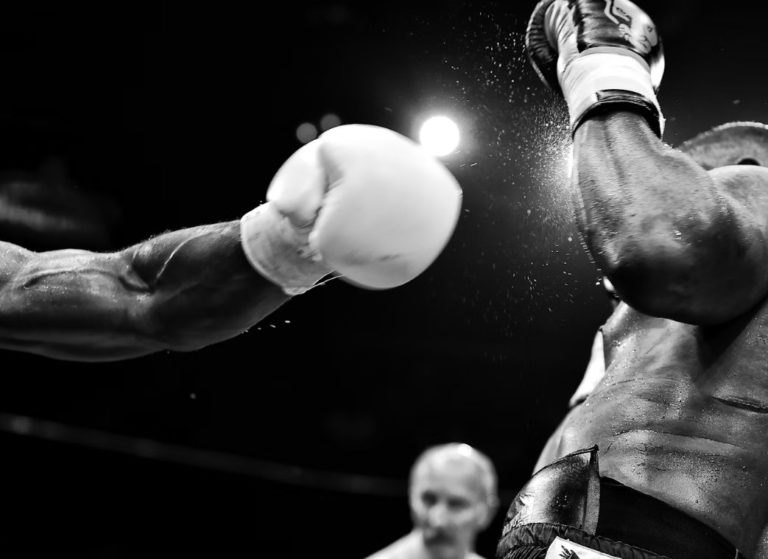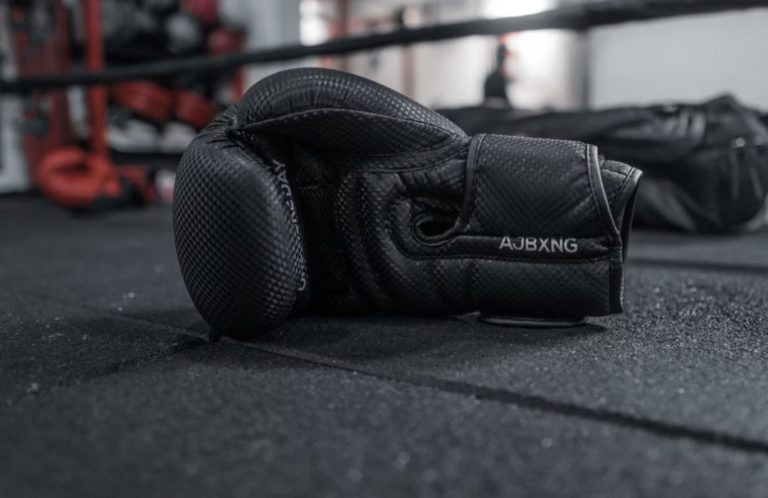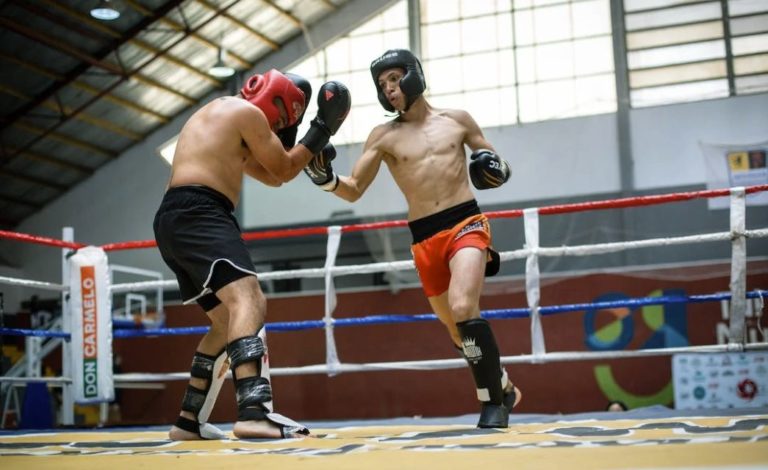How to Throw a Cross: A Step-by-Step Guide
If you want to improve your boxing skills, learning how to throw a cross is a crucial step. While the jab is important, the cross is where you can start to add power and potentially knock out your opponent. The cross uses the full rotation of the lower body to generate its power, making it a more powerful punch than the jab.
To throw a cross, you need to start with a boxer’s stance, twist your rear foot and rotate your hips, and extend your elbow and rotate your fist. However, there are also common mistakes to avoid when throwing a cross. By mastering this punch, you’ll be able to take your boxing skills to the next level.
Key Takeaways
- The cross is a powerful punch that uses the full rotation of the lower body to generate its power.
- To throw a cross, start with a boxer’s stance, twist your rear foot and rotate your hips, and extend your elbow and rotate your fist.
- Avoid common mistakes when throwing a cross to ensure maximum effectiveness.
How To Throw A Cross
To throw a cross, one must start with a boxer’s stance. This stance is the foundation of the punch and sets the boxer up for success. The boxer’s hands should be up, chin and elbows tucked, and eyes up. The weak foot should be the lead foot and the body should be tilted slightly off center. This will make the body smaller as a target. The boxer should relax and breathe, avoiding clenching the hands and forearms.
Twist Your Rear Foot And Rotate Your Hips
After establishing the stance, the boxer must twist their rear foot and rotate their hips. This movement generates the power for the cross. The body should be kept low, and the boxer should “sit on the punch.” This will make the cross feel powerful and balanced. The power generated by the cross comes from the rotational force created by the hips, not from the arm. The arm is only used to transfer the force to the target.
Extend Your Elbow And Rotate Your Fist
As the hip is twisting, the boxer must unlock and extend their elbow and rotate their fist 90 degrees. The boxer should exhale sharply as they extend, adding power to the punch and encouraging breathing. The raised shoulder protects the chin from any counter hooks. The boxer should take care not to overextend their arm to get the same reach as their jab. The fist should be clenched and braced for impact.
After the punch is thrown, the boxer should return their arm, hip, and foot to their original positions. The boxer should be balanced and ready to dodge or throw another punch.
In summary, to throw a cross, a boxer must start with a proper stance, twist their rear foot and rotate their hips for power, and extend their elbow and rotate their fist for accuracy and impact. By following these steps, a boxer can add a powerful and effective punch to their arsenal.
Common Mistakes When Throwing A Cross
When throwing a cross, beginners tend to make common mistakes that can leave them vulnerable to counterattacks. Here are some of the most common mistakes and how to avoid them:
-
Generating power with the arm instead of the hips: One of the most common mistakes beginners make when throwing a cross is relying on their arm to generate power instead of their hips. This can lead to a weak, off-balance punch that is easily countered. To fix this mistake, boxers should focus on twisting their body and rotating their hips when throwing the cross. This will help generate more power and keep the punch balanced.
-
Dropping the hand before punching: Dropping the hand before punching is another common mistake that can give away a boxer’s intentions and leave them vulnerable to counterattacks. To avoid this mistake, boxers should keep their hands up and close to their face when throwing the cross. This will make it harder for their opponent to anticipate their movements and react accordingly.
-
Not “sitting” on the punch: The third common mistake beginners make when throwing a cross is not “sitting” on the punch. This means not sinking the hips and lowering the center of gravity while throwing the punch. This can lead to a less powerful punch and leave the boxer open to counterattacks. To fix this mistake, boxers should focus on sinking their hips and keeping their center of gravity low while throwing the cross.
It is important for boxers to remember that proper technique is key when throwing the cross. By avoiding these common mistakes, boxers can improve their technique and reduce their vulnerability to counterattacks.
Looking Forward
The cross is the next level of a boxer’s offense after using the jab as a foundation. It can stun like a jab, but it can also provide power thanks to the rotational force generated by the hips. After throwing the cross, there are several options available. The footwork with the cross sets up perfectly to throw a lead hook or an uppercut. If a punch is coming towards the boxer, they can pull to dodge, slip the punch, or roll under the punch.
Beginners should focus on form when shadowboxing and go slow. When hitting the heavy bag, the cross can be used effectively. To get the most out of training, a combination of training methods can be used, such as pads, partner drills, and heavy bag work. Training in MMA, Muay Thai, or kickboxing can also help improve the effectiveness of the cross.
When deciding what boxing equipment to get, there are several options available. Some of the best boxing equipment includes jump ropes, gloves, hand wraps, headgear, shoes, and groin protectors.
Frequently Asked Questions
Proper Stance for Throwing a Powerful Cross Punch
To throw a powerful cross punch in boxing, the proper stance is crucial. The boxer should stand with their feet shoulder-width apart and their weight evenly distributed between both legs. The lead foot should be slightly turned inward, while the rear foot is turned outward at a 45-degree angle. The boxer should keep their chin down, elbows tucked in, and hands up to protect their face. The rear hand should be positioned at the level of the chin, ready to throw the cross punch with power and precision.
Key Differences Between a Boxing Cross and a Straight Punch
A boxing cross punch is a powerful straight punch thrown with the rear hand, while a straight punch can be thrown with either hand. The key differences between the two punches are the stance and the power generated. A boxing cross punch requires the boxer to pivot on their rear foot, generating a powerful rotation of the hips and shoulders to add force to the punch. A straight punch, on the other hand, can be thrown while standing still, with less power generated from the rotation of the body.
Perfecting the Technique of a Cross Punch in Boxing for Beginners
Beginners can perfect the technique of a cross punch in boxing by practicing the correct stance and footwork. They should start with their gloves tucked in front of their face, elbows pointing down. The boxer should pivot on their rear foot as they drive through their hips while extending their rear hand outward to punch. The punch should go straight out from the level of the chin, with no dropping of the hand. Beginners should practice on a heavy bag or focus mitts to perfect their technique.
Correct Way to Transition from a Jab to a Cross in Boxing
To transition from a jab to a cross in boxing, the boxer should throw a quick jab with their lead hand, followed by a powerful cross punch with their rear hand. The jab sets up the cross punch, distracting the opponent and creating an opening for the cross punch. The boxer should pivot on their lead foot as they throw the jab, then quickly pivot on their rear foot as they throw the cross punch. The transition should be smooth and fluid, with no hesitation between the two punches.
Adjustments Needed to Execute an Effective Cross in Muay Thai
In Muay Thai, the adjustments needed to execute an effective cross include the stance and the arm position. The stance is wider than in boxing, with the feet shoulder-width apart and the knees slightly bent. The arm position is also different, with the lead arm held lower and the rear arm held higher. The boxer should pivot on their rear foot as they throw the cross punch, generating power from the rotation of the hips and shoulders.
Technique Differences Between a Right Cross and a Right Hook
The technique for a right cross differs from that of a right hook in several ways. A right cross is a straight punch thrown with the rear hand, while a right hook is a circular punch thrown with the lead hand. The stance and footwork are similar for both punches, but the arm position and the angle of the punch differ. A right cross is thrown straight out from the chin level, while a right hook is thrown in a circular motion, with the elbow bent and the punch coming from the side.





